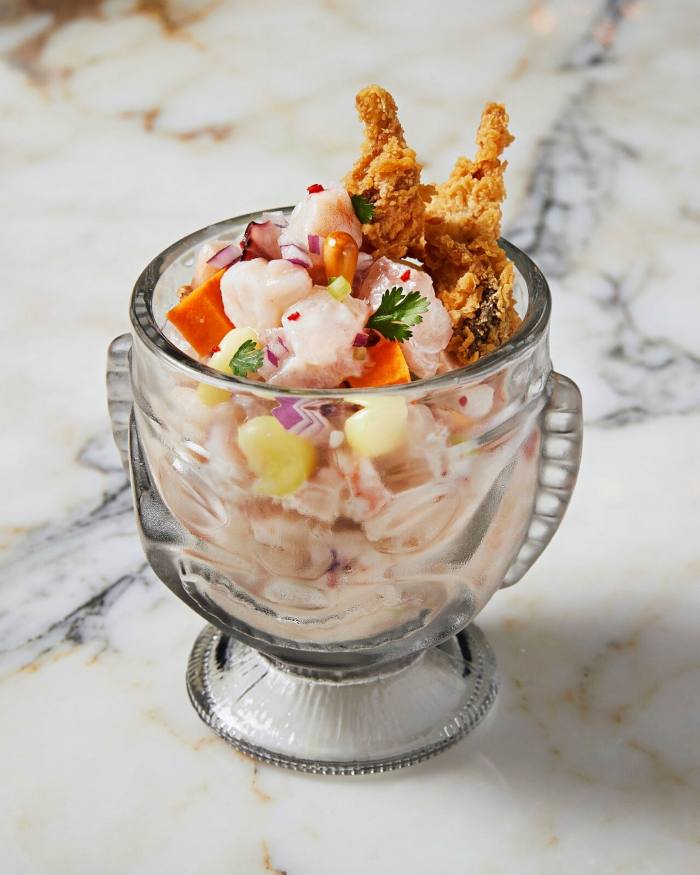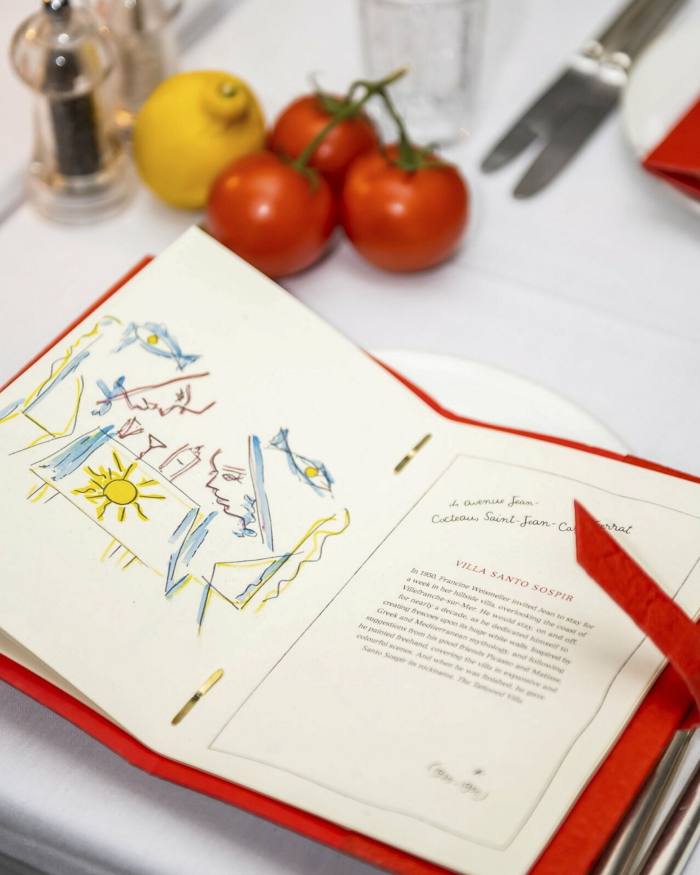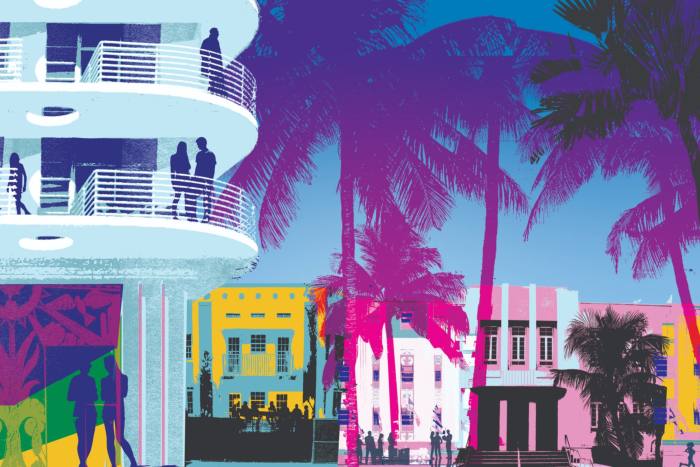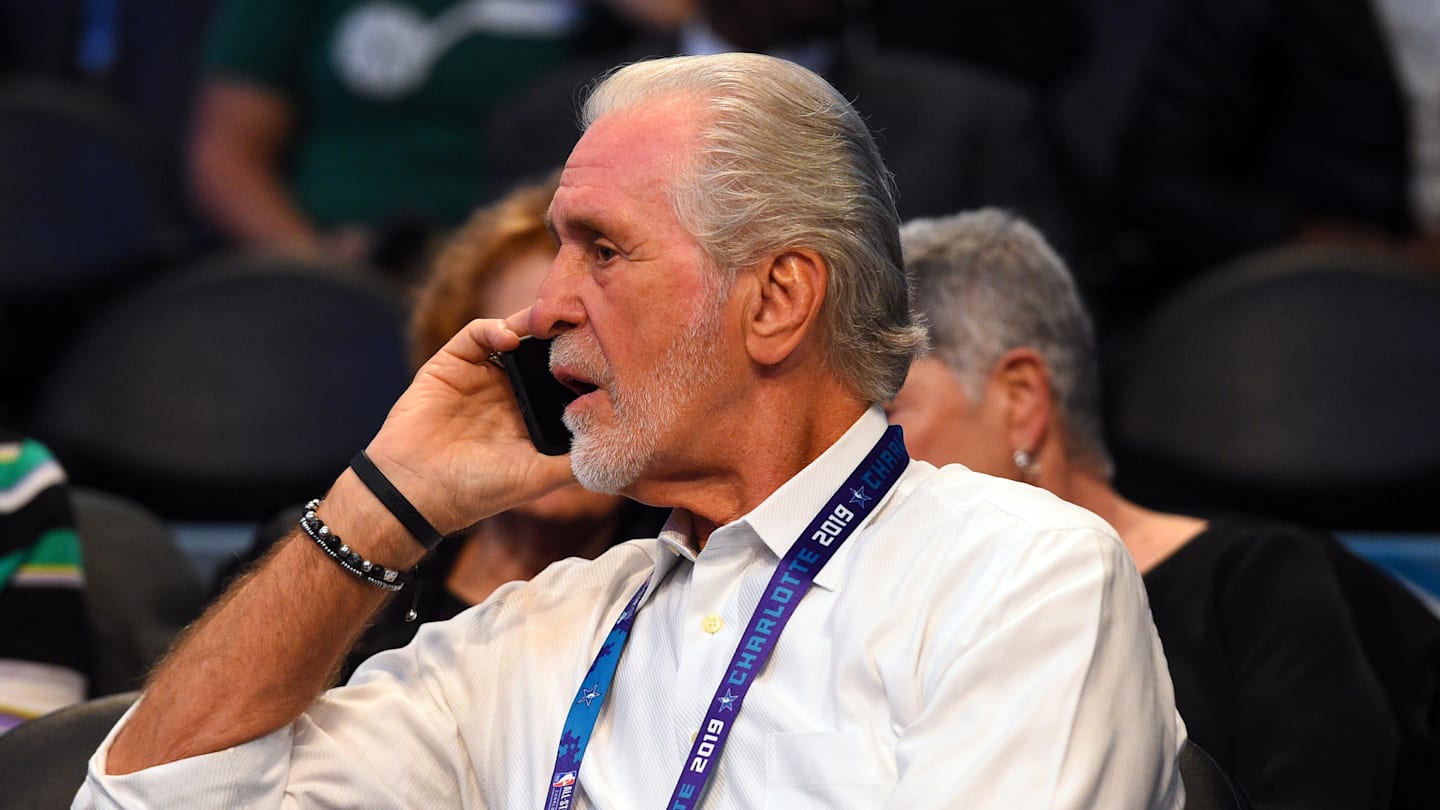A taste of Brickell, Miami’s happening finance hub
This article is part of a guide to Miami from FT Globetrotter
When planning a trip to Miami, most people might think of trendy South Beach, the hip Wynwood area known for its colourful murals and art galleries or perhaps the high-end enclave of Bal Harbour. The city tends to attract visitors in search of great beaches, buzzing nightlife and luxury shopping. But just a nine-mile drive from Miami International Airport is Brickell, the Magic City’s compact and frenetic financial district — and a neighbourhood that has been deemed one of the fastest-growing destinations in the city.
While Miami on the whole is rapidly becoming a gourmet city, I recently spent time in Brickell to get a taste of the neighbourhood’s culinary culture. With its banks, gleaming skyscrapers, high-rise hotels, walkability and wide range of restaurants, Brickell felt more to me like a mini-NYC than the Miami of popular imagination — except that it’s all a stone’s throw away from beautiful Biscayne Bay, with its sparkling waters spotted with boats and lined with palm trees. Here are some of the highlights.
Marabú
Brickell City Centre (Fourth Floor), 701 South Miami Avenue, Miami, FL 33131
-
Good for: Casual happy-hour drinks and light bites
-
Not so good for: It’s in a mall, so noise carries over, and if you’re seeking a top-notch Cuban meal, it’s probably not the best you’ll find
-
FYI: The cocktails are strong, and there are four types of mojito to choose from
-
Website; Directions

I arrived in Miami hungry but a few hours before my dinner reservation, so I sought something quick and not too far from my hotel. I opted for this spacious Cuban restaurant on the top floor of the Brickell City Centre. Marabú is bright and quirky with Havana-inspired decor: green vinyl bar seats and club dining chairs among wrought-iron garden furniture, with small pendant chandeliers like constellations hanging from the high ceiling. I chose a spot right by the large Instagrammable neon sign that offered me answers to the four possible moods I might be bringing to the table: “Good day? Mojito. Stressed? Mojito. Happy? Mojito. Mojito? Mojito.” All of the answers seemed right to me.
The menu offers a variety of traditional Cuban dishes such as lechón asado, slow-cooked pork with Cuban mojo sauce, and ropa vieja, the slow-braised beef, onion and sweet-pepper dish traditionally served with rice, or stuffed in an empanada. I tried the yuca fries tossed in truffle oil, Parmesan and rosemary, and (as a plantain lover) combined it with the tostones rellenos, crispy plantain shaped into cups and filled with picadillo habanero (Cuban-style ground-beef hash). It’s a fine place for a quick snack if you are starving like I was, but with more exciting culinary options in town, you’ll want to save your appetite for dinner.
La Mar by Gastón Acurio
500 Brickell Key Drive, Miami, FL 33131
-
Good for: A long, luxurious dinner. At night, the restaurant offers a magical view of Biscayne Bay and the lit Brickell skyscrapers across the water.
-
Not so good for: Quick bites. The food here is so good that you’ll want enough time to savour it
-
FYI: If you can lure the warm, hospitable and ultra-talented executive chef Diego Oka out of the kitchen to speak about the dishes, and the mixed cultural influences in Peru that inform the food, it’ll be an added bonus to your dining experience
-
Website; Directions


La Mar, located in the Mandarin Oriental hotel, is part of the La Mar group of restaurants that began in Lima, Peru in 2005. Each restaurant has its own distinct character, which is especially important in Florida where, chef Diego Oka told me, there are more than 600 Peruvian restaurants, so one has to make one’s restaurant unique. “The heart will always be Peruvian, but we are making our own creations as we travel and collaborate with other chefs,” he said. The food at La Mar reveals Andean, Asian and African culinary influences, which results in creative blends of ingredients and flavours, offering a unique gastronomic experience that is also bound to pique one’s interest in Peru’s blended cultural history.
I started with the cold ceviche carretillero, a tart, seafood chowder-like dish with a spicy finish made from chopped grouper, shrimp, octopus and crispy calamari mixed with sweet potato, choclo (Peruvian corn), cancha (corn nuts) and leche de tigre and served in a bowl set on ice. I followed with the causa crab, a dish of blue crab, avocado, quail eggs and cherry tomatoes, made shockingly vibrant with hot-pink-coloured beetroot causa (a Peruvian terrine) and yellow huancaína (a spicy sauce made with fresh cheese). Choosing to go easy on the meat, I had the lomo saltado, a classic Peruvian stir-fry, made with fish instead of the traditional tenderloin. Oka creates an explosion of flavours using seemingly simple ingredients: potato wedges, coriander and a side of white rice infused with butter and garlic. The food and the overall experience were phenomenal — I left baffled at how La Mar missed Miami’s newly minted Michelin-star list.
Osaka Cocina Nikkei
1300 BRICKELL BAY DRIVE, MIAMI, FL 33131
-
Good for: A business lunch, excellent nikkei cuisine (a fusion of Japanese and Peruvian culinary traditions) and seafood and sushi lovers
-
Not so good for: Anyone who doesn’t like seafood
-
FYI: Nikkei food dates back to the 19th century, when the first Japanese emigrated to Peru, which now has the second-largest population of Japanese descendants in South America
-
Website; Directions


Located on the ground floor of a condo building, Osaka Cocina Nikkei opened in 2019 as the first North American outpost of the high-end South American chain that originated in Lima. The decor has a natural, organic sensibility that makes you feel like what you eat there will be good for you: clean-lined and minimalist, with wood furniture coupled with oatmeal-coloured woven seating. There are floor-to-ceiling windows, and a pretty, brightly lit nikkei bar where chefs dice, slice and roll sushi lines the back wall.
I ate on the small front patio full of large, lush foliage. From the nikkei bar, I had a refreshing scallop ceviche, the sweet and delicate flavour of the flesh brought to life with a light cure in lime juice, which I enjoyed alongside the restaurant’s take on tuna tataki made with aji amarillo (Peruvian yellow chilli pepper) sauce. A must-have is the ebi mentaiko from the nigiri menu: shrimp torched at the table and served with a rocoto (pepper) gratin, miso and Grana Padano cheese sauce. It was a mouthful of flavour, with a hint of smokiness from the tender shrimp mixed with the slightly nutty and tangy Padano. It was easy to understand why the room was packed for lunch.
LPM
1300 Brickell Bay Drive, Miami, FL 33131
-
Good for: Creative and exquisite cocktails — and pretending you’ve stepped into a seaside spot along the French Riviera
-
Not so good for: Anyone trying to watch their waistline. With its rich cuisine and decadent drinks, LPM isn’t the place for calorie counters
-
FYI: For art lovers, you’ll see a Ferdinand Barbedienne reproduction of “Gloria Victis”, the 19th-century bronze statue created by Marius-Jean-Antonin Mercié after France lost the Franco-Prussian War
-
Website; Directions


It’s been five years since LPM, a chic French-Mediterranean eatery, opened an outpost in Brickell. But a real highlight here is a recent addition to its offering: a Jean Cocteau-themed cocktail menu, an ode to the 20th-century French artist, writer and film-maker whose zest for life infused his work, his relationships — and his celebratory habits. Global bar manager Tibor Krascenics and his team have created an exquisite drinks experience complete with a storybook menu and an array of selectively paired amuse-bouches, such as salted Chilean sea bass croquettes, and tempura courgette flowers stuffed with anchovies and sage. The red cocktail menu booklet looks like a sleeve of soft thin leather but is made of pineapple skin and titled Recipes for our Friends — a homage to 1964’s Recettes pour un ami, a little red book written by chef Raymond Oliver (of the opulent Parisian restaurant Le Grand Véfour) and illustrated by Cocteau.
The menu of 12 cocktails includes replicas of Cocteau’s drawings, and each of its four chapters honours a cherished location in his life, with an explanation of the inspiration and story behind each drink. While the creative and artistic details were charming, every cocktail I sampled was exquisite.


My first cocktail was Linden Alley, a mix of Saint-Germain, Suze and sour linden tea, influenced by Cocteau’s early life in the town of Maisons-Laffitte — a place, the menu says, surrounded by linden trees and where Cocteau began writing poems at the age of 10. Before the first sip, I was offered a wet towel infused with Linden essential oil, to wipe my hands in order to better bring out the flavour. The drink was refreshing — and unlike anything I had ever tried before. If a spring flower were a drink, it would taste like this: lightly sweet, and a delicate mix of floral and herbal.
My favourite, however, was the Lettre à Coco, inspired by the 1920s French Riviera, where Cocteau spent time with friends including Coco Chanel. The cocktail, made with vodka, champagne cordial, jasmine, bergamot and rose, was a fragrant and floral tribute to the fashion designer’s first perfume, Chanel No 5, and served with a little pink envelope sealed with embossed wax. A love note inside, supposedly one that Cocteau had written to Chanel, said: “Coco, tu es irremplaçable, car tu es differente. Bisous — Jean” (“You are irreplaceable because you are different”). A fitting final word on an evening of drinks different from anything I’d ever experienced and, for this lover of libations, certainly irreplaceable.
Share your Brickell dining highlights in the comments
Follow FT Globetrotter on Instagram at @FTGlobetrotter
Cities with the FT

FT Globetrotter, our insider guides to some of the world’s greatest cities, offers expert advice on eating and drinking, exercise, art and culture — and much more
Find us in Miami, New York, London, Paris, Rome, Frankfurt, Singapore, Tokyo and Hong Kong



